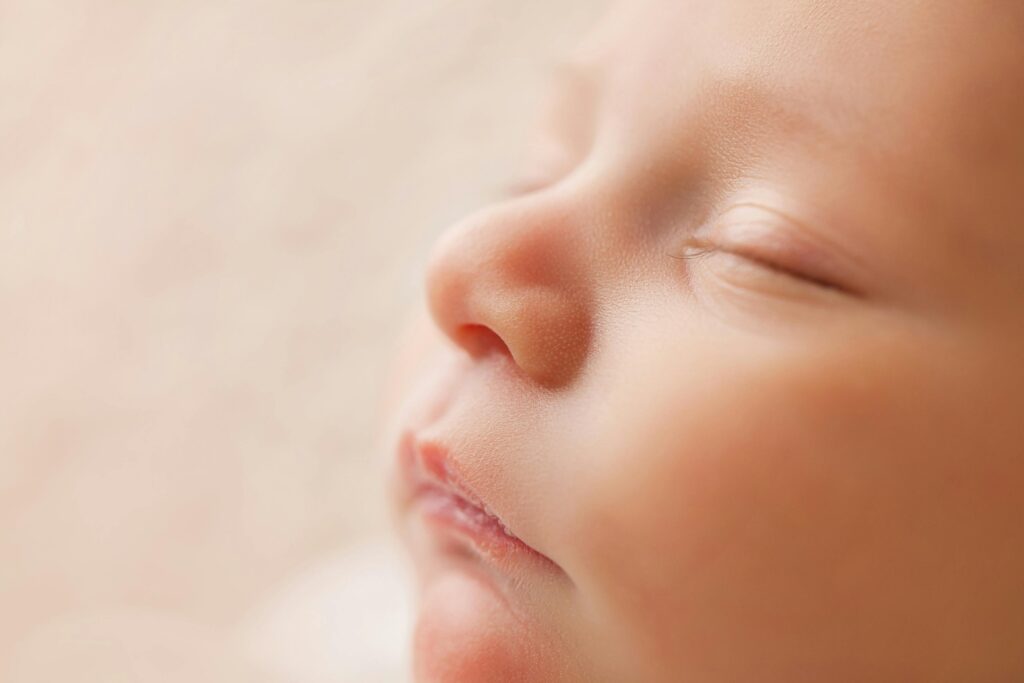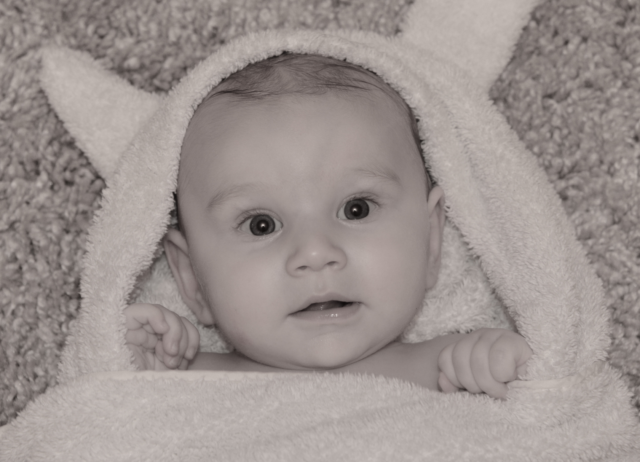Understanding Infants: Why Does My Baby Sound Congested But Have No Mucus in the Nose?
Normally, infants who suffer from a runny nose make noise. Now, if you notice that your little one does not, you might be wondering why your baby sounds congested but no mucus in nose. This article will explain why babies sometimes sound congested without the presence of mucus. Moreover, the article will tackle the difference between normal breathing and congestion. The cause and effective ways of clearing your baby’s airways will also be addressed. Lastly, you will also learn when it is important to see a pediatrician and when and how to use tools, like the Momcozy nasal aspirator, to ease your infant’s breathing issues.
Why Babies Can Sound Congested Without Visible Mucus

Photo by Yan Krukau
Did you know that your infant’s nasal passageways are still developing in their early years of life? The tight openings can easily be blocked by debris and cause your infant to have restricted breathing. Moreover, the still-maturing immune system also causes mucus production to increase, especially when there are irritants present in your infant’s airways. This may be due to dryness, inflammation caused by dust, or the dry air present in your baby’s room. The sensitive airways of your baby can make breathing nosier when they have mild irritation. And since they are mostly nose-breathers, the sound becomes more prominent when there is a small blockage.
Normal Newborn Breathing Noises vs. True Congestion
Newborns tend to make all sorts of snuffley wheeze noises that sound like a clogged nose, but are usually normal. They can include snuffles, grunts or clicks. Almost all newborn noises are harmless and born of a mixture of fluid in the lungs from birthing and the normal conformation of a baby’s airway. However, proper congestion is evident via more noticeable signs including a stuffy nose with regularity, wheezing breathing, persistent coughing or feeding problems due to blocked breathing air. Understanding the difference stages offer parents the ability to remain calm, and understand when to take action.
Causes of “Hidden” Congestion: Throat Mucus, Dry Air, Milk Residue
There are several reasons a baby might sound congested without visible nasal mucus:
- Throat mucus: There are cases when the mucus is experienced in the back of the throat. This may result to noisy breathing or cough without a runny nose
- Dry air: Just like in the former case, dry air indoors may worsen nasal passages by irritating them, but leaving no mucous to clear up.
- Milk dust: Due to feeding, there can be some milk residue in and around the throat and nose region, which might produce a little bit of blockage or clogs sound.
- Allergies or minor infection: These may create some mild inflammations resulting in noise in air movement though there is no thick mucus.
How to Tell If It’s Nasal, Throat, or Chest Related

Photo by Jonathan Borba
- Nasal congestion causes noisy breathing mainly when the baby breathes through the nose. You may see the baby frequently rubbing or touching their nose. It can also be responsible for sniffling, minimal feeding difficulties and snoring whilst sleeping.
- Congestion of the throat results in coughing, gagging or rattle in the throat. The baby may cough often or sound hoarse. These symptoms develop when your mucus irritates the throat.
- Congestion of the chest results in wheezing or rattling songs from the lungs. The baby may be breathing quickly, or seem to be struggling to breathe. Wheezing is a type of high pitched cough resulting in blocked airways. It can also provide for a watery cough, the snorting and fatigue of deep breathing.
Using a Humidifier or Steam to Help Ease Breathing
The dry air is one of the prime reasons behind the congestion without mucus sounds. A humidifier will introduce moisture into the air and provide the nasal cavity of your baby and the throat with relief. Warm water can also be used to loosen mucus stuck in the throat or nose, thus breathing relaxes. Room temperature should be at a comfortable level, so it should not be too hot, and a humidifier must be clean to avoid the growth of mold and bacteria.
Safe Positions for Sleep and Feeding That May Improve Airflow
Positioning your baby correctly can help reduce congestion sounds:
- While sleeping, put your baby flat on his/her back and on a firm sleeping surface with the head slightly raised. This pose also aids drainage, as well as keeping nasal openings clear.
- When feeding feed your baby in an upright or semi-sitting up position. This will avoid formation of milk residue in the throat and minimize congestion sounds.
- You should not put your baby face down or flat on the container because this may add congestion and make breathing louder.
When to Try Gentle Nasal Saline or Suction

Photo by Burst
In case you see that your baby is feeling uneasy and has a problem with breathing, as far as he has some congestion, you should take some measures:
- Nasal salty drops or spray to moisten and loose the mucus within the nose.
- With a shiny momcozy nasal aspirator, a soft suction to remove any nasal congestion. This device is safe and comfortable to use by babies and it also has easily adjustable suction level, soft tips to provide soft and effective relief.
These care practices will help to alleviate the congested feeling observed in your baby, to help him or her breathe easier. Be friendly, and do not apply excessive suction which may cause irritation.
Red Flags: When to Call the Pediatrician
Seek medical help if your baby has any of these signs:
| Difficulty breathing, or breathes very fast | Difficult or rapid breathing can be symptoms of severe lung diseases Urgent medical assessment is required to make sure that oxygen is taken well. |
| Lips or face turning blue or pale | Blue or pale coloring signals low oxygen or circulation and requires urgent emergency care. |
| High fever with congestion | High fever plus congestion can mean a serious infection. Babies under 3 months or those with prolonged fever should see a doctor quickly. |
| Continuous cough lasting more than a week | A cough that takes more than seven days should be assessed by a physician to exclude the existence of infections or other problems. |
| Poor feeding or signs of dehydration | If your baby show signs of not being able to feed up properly and show signs of dehydration (less wet diapers, dry mouth) get medical help immediately. |
| Repeated breathing that is noisy and disturbing sleep or nourishing | Noisy breathing that affects sleep or feeding could signal airway problems needing evaluation. |
| Early check up detects grave problems | Early doctor visitation will help identify infections early and address them to ensure that patients have no complications. |
Conclusion
It is natural that babies will sound congested when no one sees the mucus in the nose. This occurs as a result of narrow nasal apertures, throat mucus, dry air or milk leftovers. Knowing when the noises during normal breathing are different and when the real congestion is present helps the parents take good care of their babies without any doubt. Symptoms can be alleviated by humidifier use, good positioning and gentle nasal care with devices, such as the Momcozy nasal aspirator. Adults should always be on the lookout and a pediatrician should be consulted in case red flags are identified. To meet your baby in the most suitable manner, to realize her comfort and healthy thing to breathe, you learn the causes of hidden congestion and the way to deal with it every day.











Leave a Reply